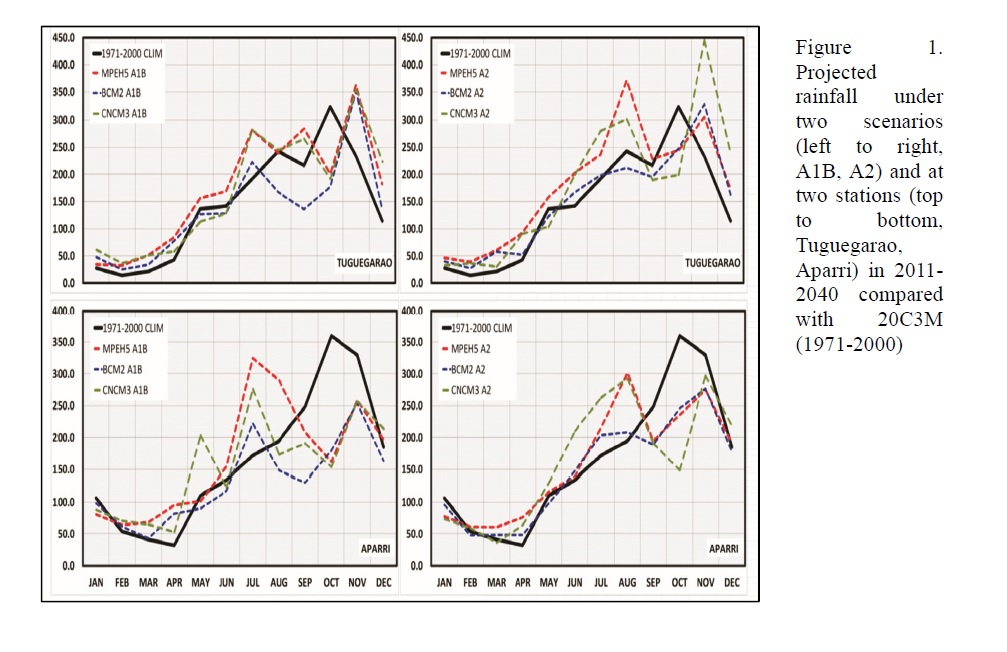Graphical Abstract
Basconcillo, J., A. Lucero, A. Solis, R. Sandoval, Jr., E. Bautista, T. Koizumi, and H. Kanamaru, 2016: Statistically downscaled projected changes in Seasonal Mean Temperature and Rainfall in Cagayan Valley, Philippines. J. Meteor. Soc. Japan, 94A, 151-164.
https://doi.org/10.2151/jmsj.2015-058
Graphical Abstract with highlights
Highlights:
- Regarding seasonality, dry months (March-April-May) will continue to remain dry but within the rainy season, July and November are likely to become more notable wet months (Fig. 1).
- In both stations, the future projections show more pronounced double peaks in the annual cycle of rainfall compared to the 20th century – the first peak between July and September, and the second in November. In fact, July precipitation shows substantial increases (typically +50 to +100mm) in all models, scenarios, and stations, suggesting a shift of rainfall distribution to earlier in the rainy season.
- Analysis of aggregated projected annual maximum (Tmax) and minimum temperature (Tmin) (2011-2040) in Cagayan Valley reveals higher increase in Tmin compared to Tmax. The rate of increase in Tmin under A1B is 0.07°C per year and 0.05°C per year for Tmax. Under A2 scenario, the rate of temperature increase is slightly smaller: 0.05°C and 0.04°C per year (Tmin and Tmax, respectively). This differentiated projection for Tmax and Tmin suggests that diurnal temperature range will be smaller in the future.







